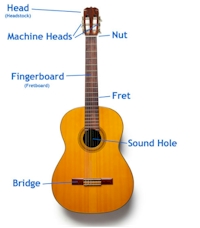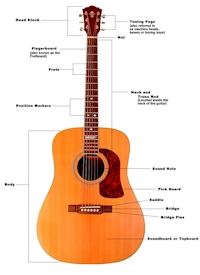
Guitar Equipment
Types & size of guitars, accessories and recommendations.
A guitar is a guitar? Not a chance. The type of guitar chosen for the beginner will be a significant factor in determining eventual success or failure.
Guitar Types
There are two types of guitars: Nylon-string and Steel-string.
Nylon-String Guitar: Classical
- Smaller body size, usually
- Nylon strings (easier on the fingers)
- Warm sound
- Open head (see thru)
- Wider neck
- Neck light in weight
- Bridge is loop type. No bridge pins.
- No pick guard under the sound hole
- Played WITHOUT pick
- Larger body size, usually
- Steel strings (harder on the fingers)
- Bright sound
- Closed head
- Narrower neck
- Neck (steel-reinforced) is heavy in weight
- Bridge is pin type.
- Most have a pick guard under the sound hole.
- Played WITH pick
Like, electric guitars, below acoustic steel-guitars are best used with a guitar strap to support their heavy necks (This issue is explained below). These instruments have pick guards because they are intended to be strummed/picked with a pick. Their bodies are large to amplify their sound for stage performance. Although some artists have learn to "finger pick" with them, this style of play (and other traditional styles of guitar playing) presents a greater challenge on these instruments. They are great for stage/recording venues and sing-a-longs, but it's my contention that they are harder to learn on (for reasons described below) than nylon-string guitars.
Electric guitars are an amplified version of the acoustic instrument with electrical "pick-up" built-in microphones to capture the string vibrations. Because of the pick-up mics they do not need the large body to project the sound. Electric guitars were designed to be held up by guitar straps to support their heavy necks (This issue is explained below). Like acoustic guitars, they are great for stage/recourding venues, but it's my contention that they are harder to learn on (for reasons described below) than nylon-string guitars.
Vocabulary you'll need to know:
Action: the distance between the strings and the fretboard. Generally, a lower action makes a guitar easier to play. If the action is set too low on a guitar some notes will make a buzzing sound when played. The positioning of the frets is a matter of micrometers. Makers of cheaply-made instruments will try to compensate for their inaccurate fret positioning by raising the action to eliminate buzzing; this of course, makes the guitar harder to play.
Scale length: the distance along the string between the nut and the bridge saddle. Generally, the larger the guitar, the greater the scale-length. Scale-length determines the guitarist's left hand/arm position. The wrong scale-length will cause an awkward bending of the left wrist.
Nut width: the distance across the nut of the guitar. The nut width affects the amount of space between the strings and therefore, the left hand finger positioning, as well as the right finger spacing. Too wide of nut causes left-hand excessive finger stretching and potential intonation issues. Too narrow of nut positions the strings too close for beginners making it difficult to achieve clean tones. Thankfully, Nylon-string instruments have a wider nut width (than steel-string instruments) allowing more room for the right-hand fingers.
Box depth: (or body depth) is the depth of the guitar's body. It affects the positioning of the guitarist’s right hand/arm. Too great of a box depth pushes the right hand out too far away from the guitar. Nylon-string guitars have a much better box depth than steel-string guitars for positioning a beginner's right arm and hand.
Comparing:
Comparatively, guitars types are very similar. If you begin on one type you can switch to type without major issue. In fact, most professional performers are capable on all types. Like discussing DNA: estimates of genetic similarity between humans and chimpanzees suggested they were 98.5–99.4 percent identical.
Contrasting:
The differences, however small, between the guitar types will decide which one you will want to purchase as a beginning instrument. The subtleties are so important as to play a major role in determining the success or failure of the beginner.
Steel-string guitars have four characteristics that present problems for the beginner:
(1) they have steel strings
(2) their necks are heavy
(3) their necks (nut width) are narrow
(4) the box depth of the body is large
(1) Thin steel feels nearly like razor blades to young fingers. Kids, especially, find the feeling a significant barrier to practicing.
(2) Steel strings require greater tension to bring them up to pitch. Because of the extra tension required, steel-string guitars (acoustic and electric guitars) have a steel-reinforced necks to prevent the wood neck from warping. The necks of steel-string instruments are heavier than nylon-string instruments. (Under normal application, nylon strings do not require the amount tension that will bend the wooden neck.) This extra weight in the neck causes beginners to support the neck with their left hand while playing; this is undesirable for beginners.
(3) Steel-string guitars have narrow nut width which places the strings close to each other. What would seem like an advantage to little hands has the exact opposite impact. The closeness of the strings makes it very difficult for the beginner to achieve clean sounding tones.
(4) The large box (body) depth of a steel-string guitar forces the instrument to be played on the right leg instead of the left leg. This position causes causes considerable tension in the right shoulder. Traditional guitar playing calls for the right forearm to be placed above the bridge so that the fingers of the right hand properly fall across the strings. This cannot happen naturally on a large-bodied acoustic instrument. The way to reach the strings is for the right arm to be at the crease between the forearm and upper arm; this creates problems that will need to be surmounted in the learning process.
It is for the above reasons that I encourage beginners to start on a nylon string instrument.
Cautioning:
Never put steel strings on a classical (nylon-string) guitar. The tension required to tune the steel strings will crack or warp the neck (bend it forward) and/or tear off the bridge. Note: The three thickest strings of a classical are synthetic-core, commonly nylon, with a metal winding around each to add mass. Though, they appear to be "steel-looking," if you check the ends of the strings you will find proof of the the synthetic cores.

Background: For reasons described above, we shall only focus on nylon-string guitars. Student nylon-string guitars are smaller than adult full-size guitars; they are commonly known as “fractional” guitars. They range from 1/16 Size to full-size. The full-size is sometimes referred to as a 4/4-size. Some manufacturers/stores will describe the size of a guitar only by its scale length.
Some Classical Guitar Impersonators On the Market:
(1) Guitalele: This is a 4-string tenor ukulele that has had two lower strings added.
The tuning is different than usual guitar tuning, so they don't function well as guitars.
(2) Requinto: Traditionally, a Requinto is a small guitar that are made for adult hands
(the nut width and the radius of the neck is larger than children's models of the same length).
However, the word "Requinto" is being used by some guitar makers (Alhambra, Almansa, Cordoba, Ruben Flores)
as a model name for guitars intended for children.
(3) Flamenco Guitar: Used, traditionally, to accompany flamenco dancers and singers; at first glance, these
look very similar to the classical guitar, however they are usually slightly smaller, made of a wood material
that projects a brighter tone and they have a tap plate (golpeador) that protects the body from hand slaps.
Nylon-string Classical Guitar Sizing Guide*:
| Fractional Size | Guitar Body (in) | Guitar Body (cm) |
| 1/16-Size | ||
| 1/8-Size | ||
| 1/4-Size | 30” x 10.6” | 77cm x 27cm |
| 1/2-Size | 33” x 11.8” | 86cm x 30cm |
| 3/4-Size | 36” x 13.4” | 92cm x 34cm |
| 7/8-Size | ||
| 4/4-Size | 40” x 14.9” | 100cm x 38cm |
*manufacturers vary their dimensions.
So, what size do I buy?
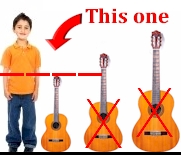
The correct size guitar for a beginning student depends on the height of the player. Take the hip test or see the chart below.
The Hip Test: "Assuming that the student has a classic [nylon-string] guitar, the main concern is
with the guitar's length relative to the height of the student when he or she is standing. This is
determined with the lower end of the guitar resting on the floor with its head pointed upward while the
guitar is held close to the student's side. Try to choose a guitar whose head extends preferably to the
lower ribcage or hip area. Keep in mind that these recommendations are approximate and that it's better
to select a guitar that is somewhat smaller than one that is too large."
‒ Aaron Shearer
Roughly Relating Guitar Scale Length to Guitar Body Size:
| Floor to Hip | Scale length (cm) | Size of Guitar |
| 24” | 40 cm | 1/16-Size |
| 26” | 45 cm | 1/8-Size |
| 28.5” | 50 cm | 1/4-Size |
| 33.5” | 55 cm | 1/2-Size |
| 35.5” | 60 cm | 3/4-Size |
| 36.75” | 63 cm | 7/8-Size |
| Higher | 65 cm | 4/4-Fullsize |
If you haven't yet purchased a guitar, purchase a nylon-string guitar!
I highly recommend that beginning students start with a nylon-string guitar because nylon strings are much easier on the fingers. The smaller body size will allow proper arm positioning. The neck weight will make it easier on young beginners to play properly.
If you are considering a used guitar, have a professional check it out. Be concerned with the "action" of the instrument (Action refers to the height of the strings above the fingerboard.), warpage, cracking, and buzzing.
Careful when purchasing: Cheap guitars tend to be more "toy" than finely crafted instrument; they have trouble staying in tune and usually have a "high" action making them difficult for beginners to play.
If you cannot afford to purchase a new recommended good guitar, consider a used recommended guitar. If you must buy new with the same budget restrictions, Yamaha guitars can be acceptable instruments; guitar teachers have commented that they are inconsistent.
Here is a listing of suitable student guitars:
(Scale Length/Nut Width)
Recommended
Esteve 3ST40 (40cm/48mm): Fernandez
Moreno Moore, Luthier (38cm/?mm): Moreno Moore Guitars
Moreno Moore, Luthier (40cm/?mm): Moreno Moore Guitars
Recommended
Kremona Sofia S44C (44cm/44mm): Gryphon, East Village, TCGS, Guitar Center?
Little Gringos (44.8cm/44.5mm): Gringo Star Guitar
Recommended
Benjamin Garcia, Luthier (52cm/?mm): Gringo Star Guitar
Esteve 3ST48 (48cm/48mm): Fernandez, Summerhays
Granada GR 1/48 (48cm/46mm): Dressler
§ Hopf-Hellweg Bronco 480 (48cm/43mm): Dressler, Thomann
Kremona Sofia S48C (48cm/44mm): Gryphon, East Village, TCGS, Guitar Center?
Kremona Sofia S51C (51cm/44mm): Gryphon, East Village, TCGS, Guitar Center
Little Gringos (51cm/47.6mm): Gringo Star Guitar
Moreno Moore, Luthier (46.7cm/?mm): Moreno Moore Guitars
Moreno Moore, Luthier (50cm/?mm): Moreno Moore Guitars
♪ Strunal (44cm/43mm) Spruce: Meantone YoungMusicians SmallGuitars Gryphon
♪ Strunal (44cm/43mm) Cedar: Meantone Young Musicians SmallGuitars Gryphon
§ recommended by the European Guitar Teachers’ Association
Not Recommended
Recommended
Benjamin Garcia, Luthier (55cm/44.5mm): Gringo Star Guitar
Esteve 3ST53 (53cm/48mm): Fernandez, Summerhays
Granada GR 1/53 (53cm/48mm): Dressler
§ Hopf-Hellweg Bronco 530 (53cm/48mm): Dressler, Thomann
Kremona Sofia S53C (53cm/46mm): Gryphon, East Village, TCGS
Little Gringos (55cm/50.8mm): Gringo Star Guitar
Moreno Moore, Luthier (53cm/?mm): Moreno Moore Guitars
Moreno Moore, Luthier (55cm/?mm): Moreno Moore Guitars
Ruben Flores Requinto (54.4cm/50mm): Ruben Flores
♪ Strunal (53cm/43mm) Spruce: Meantone YoungMusicians SmallGuitars Gryphon
♪ Strunal (53cm/43mm) Cedar: Meantone YoungMusicians SmallGuitars
Yamaha Student Series CGS103AII Classical Guitar, Natural: Amazon
§ recommended by the European Guitar Teachers’ Association
Not Recommended
Cordoba La Playa 1/2 Size Electric Nylon String Classical Guitar: Amazon
Cordoba Requinto 580: Amazon, Amazon2, Guitar Center
Hohner HAG250P 1/2 Sized Classical Guitar: Amazon
Lucida LK-2-1/2 Student Model Classical Guitar: Amazon
Oscar Schmidt OCHS 1/2 Size Classical Guitar: Amazon
Stagg C510 1/2 Size Classical Guitar: Amazon
Valencia VG-CG1KN 1/2 size Classical Guitar, Natural Finish: Amazon
Valencia VG-CG1KBU 1/2 size Classical Guitar, High Gloss Blue Finish: Amazon
Recommended
Esteve 3ST58 (58cm/48mm): Fernandez Music, Summerhays Music
Granada GR 1/58 (56cm/48mm): Dressler
§ Hopf-Hellweg Bronco 580 (58cm/48mm): Dressler, Thomann
Kremona Sofia S56C (56cm/46mm): Gryphon, East Village, TCGS, Guitar Center?
Kremona Sofia S58C (56cm/48mm): Gryphon, East Village, TCGS, Guitar Center?
Little Gringos (58.6cm/50.8mm): Gringo Star Guitar
Moreno Moore, Luthier (58cm/?mm): Moreno Moore Guitars
Moreno Moore, Luthier (60cm/?mm): Moreno Moore Guitars
Ruben Flores Cadete (58cm/48mm): Ruben Flores
Strunal (57cm/45mm), Spruce: Meantone, Young Musicians, SmallGuitars, Gryphon
Strunal (57cm/45mm), Cedar: Meantone Young Musicians SmallGuitars
Yamaha CGS103A: Amazon
Yamaha CGS103A II: Amazon
* Yamaha CS40 II (58cm/48mm), Natural: Amazon
‡ * Yamaha CS40 (58cm/48mm), Natural: Amazon
* Yamaha calls this a 7/8, but it measures nearer the 3/4 models
‡ discontinued by the manufacturer; some stores still have them in stock.
§ recommended by the European Guitar Teachers’ Association
Not Recommended
Recommended
Gringo Junior (63cm/?): Gringo Star Guitar
§ Hopf-Hellweg Bronco 630 (63cm/52mm): Dressler, Thomann
Kremona Sofia S61C (61cm/50mm): Gryphon, East Village, TCGS
Kremona Sofia S62C (62cm/50mm): Gryphon, East Village, TCGS
Kremona Sofia S63C (63cm/50mm): Gryphon, East Village, TCGS
Moreno Moore, Luthier (62cm/?mm): Moreno Moore Guitars
Moreno Moore, Luthier (64cm/?mm): Moreno Moore Guitars
Ruben Flores Senorita (63.6cm/50mm): Ruben Flores
Strunal (62cm/48mm) Spruce Top: Meantone, Young Musicians, SmallGuitars
Strunal (62cm/48mm) Cedar Top: Meantone Young Musicians SmallGuitars
§ recommended by the European Guitar Teachers’ Association
Not Recommended
Recommended
Gringo Junior (65cm/?): Gringo Star Guitar
Gringo Plus Student Guitar (65cm/?): Gringo Star Guitar
§ Hopf-Hellweg Bronco 650 (65cm/52mm): Dressler, Thomann
Jose Luis Diaz Reyes, Luthier: Guitarras Felipe Diaz Gringo Star Guitar
Kremona Sofia (65cm/52mm): Gryphon, East Village, TCGS, Guitar Center
Moreno Moore, Luthier (65cm/?mm): Moreno Moore Guitars
Ruben Flores Professional (65cm/50mm): Ruben Flores
Strunal (65cm/49mm), Spruce: Meantone, Young Musicians, SmallGuitars Gryphon
Strunal (65cm/49mm), Cedar: Meantone Young Musicians SmallGuitars
Yamaha CGS104A: Amazon
Yamaha CGS104AII: Amazon
Yamaha CG122MCH, Solid Cedar Top: Amazon
Yamaha CG122MSH, Solid Spruce Top: Amazon
Yamaha C40II (65cm/52mm): Amazon
‡ Yamaha C40(65cm/52mm): Amazon
‡ Yamaha C45:
‡ discontinued by the manufacturer, but still around (new & used).
§ recommended by the European Guitar Teachers’ Association
Not Recommended
Guitar Accessories Menu:
Tune it or lose it! Tuning is the first step to successful practicing. Buy a tuner, find one online or find a phone-app!
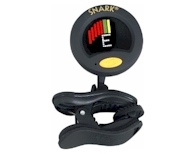
Cherub WST-550G: Amazon
ChromaCast CC-440-DBL: Amazon
Fender FCT-12, Black: Amazon
Fender FT-004 Chromatic Clip-On Tuner: Amazon
Fishman FT-1: Amazon
Fishman ACC-TUN-FT2: Amazon
Intelli IMT500: Amazon
Intelli IMT600: Amazon
Intelli IMT-900: Amazon
Intellitouch PT10 Mini Clip-On Tuner: Amazon
Intellitouch CT1 Capo Tuner, Silver: Amazon
Intellitouch CT1B Capo Tuner, Black: Amazon
Korg AW2G: Black White Red Orange Indigo Violet
Korg PitchClip Low-Profile Clip-on Tuner: Amazon
Korg Pitchhawk Clip On Tuner: Amazon
Planet Waves D'Addario NS Micro Clip-On Tuner: Amazon
Snark SN1 Guitar Tuner: Amazon
Snark SN2 Guitar Tuner: Amazon
♪ Snark SN8(B) All Instrument Clip-On Tuner: Amazon
Snark SN13 Chromatic Tuner, Gloss White: Amazon
SpeedPro Clip On Guitar Tuner: Amazon
TunerOnGuitar: Amazon
♪ Peterson SC-1 Strobo Series StroboClip Guitar Tuner: Amazon
Pitch Pocket Tuners HST: Amazon
Yamaha Clip-on Guitar Tuner: Amazon
Musicians use metronomes for practice; however, they are not for everybody. These days you have many options: free phone apps, internet metronome sites, electronic, or mechanical (old school, but elegant). Metronomes tend to be a value to musicians, however they can be a great annoyance to the rest of the family. Click - click- click! Consider one that can be made personal by the use of an ear plug and/or volume adjustment.
Modern electronic metronomes come with tuners and an ambient mic that is acceptable in quiet solitude. Consider a contact mic if you it use as a tuner (see below). Again, you'll want one that comes with an ear plug input and volume adjustment capability.
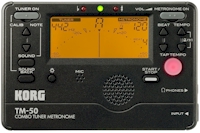
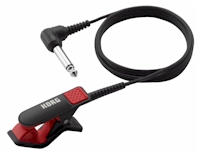
Mechanical Metronomes must be on a level surface to work properly. Wood metronomes are much preferred to plastic.
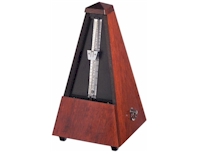
Wittner 803 Wood Case Metronome without Bell, Gloss Walnut: Amazon
Wittner 813M Wood Case Metronome with Bell, Matte Walnut: Amazon
Wittner 803M Wood Case Metronome without Bell, Walnut: Amazon
Wittner 801 Wood Case Metronome without Bell, Gloss Mahogany : Amazon
Wittner 811M Wood Case Metronome with Bell, Mahogany: Amazon
Wittner 801M Wood Case Metronome without Bell, Mahogany: Amazon
Wittner 816M Wood Case Metronome with Bell, Black: Amazon
Wittner 806M Wood Case Metronome without Bell, Matte Black: Amazon
Mechanical Metronomes must be on a level surface to work properly. Wood metronomes are much preferred to plastic.

Wittner Wood Case Taktell Super-Mini Metronome, Black Matte: Amazon
Wittner Wood Case Taktell Super-Mini Metronome, Mahogany: Amazon
Wittner 886051 Taktell Super-Mini Metronome, Black Plastic: Amazon
Wittner 884051 Taktell Super-Mini Metronome, Ruby Plastic: Amazon
Wittner 882051 Taktell Super-Mini Metronome, Ivory Plastic: Amazon
Wittner 834 Taktell Piccolo Metronome, Ruby Plastic: Amazon
Wittner 836 Taktell Piccolo Metronome, Black Plastic: Amazon
After you've witnessed your instrument fall over onto its peg box a few times, you'll understand the need for a guitar stand. The alternative is to pack it in its bag, but then it has to be pulled out each time it is be played. A guitar stand will enable you or your child to place it somewhere safe and accessible.
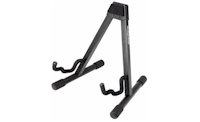
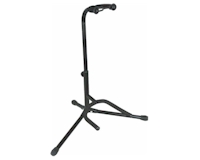
I highly recommend a heavy-duty stand for in-home use. A heavy-duty music stand will not fall over like the wire portable models. The basic wire stand will fold into a slender bag for easy portability, but they tend to be top heavy when music books are placed on them and will fall over when bumped. Once you've had one fall over onto the face of your guitar, you'll have wished you'd bought the more stable model.
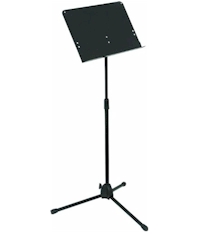
♪ Manhasset Model #48 Music Stand: Amazon
Manhasset M48C Short Concertino Stand, Black: Amazon
Manhasset 4801-PK Pink Aluminum Sheet Music Stand: Amazon
Manhasset 4806HPK Model #48 Symphony Music Stand, Hot Pink: Amazon
Manhasset M52 Voyager Music Stand: Amazon
Manhasset M52C Voyager Concertina Stand: Amazon
Manhasset 5201 Music Stand: Amazon
Manhasset 5301 Manhasset Table Top Stand: Amazon
Manhasset Mh5001 Orchestra Stand: Amazon
♪ Musician's Gear Heavy-Duty Folding Music Stand Black: Amazon
On-Stage SM7211 Professional Folding Orchestral Music Stand, Black : Amazon
Pyle-Pro PMS1 Heavy Duty Tripod Music Note Stand: Amazon
Stagg Orchestral Music Stand, Black: Amazon
Your Forte Collapsible Heavy Duty Music Stand, Black: Amazon
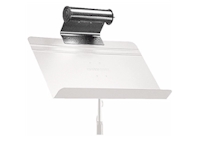
GigEasy SM4C-2 Manhasset Stand Mount for Apple iPad 2/3/4: Amazon
Grover-Trophy Music Stand Long Clip: Amazon
Manhasset 1000 School Music Stand Light Lamp: Amazon
Manhasset 1100 Model #1100 Accessory Shelf, Music Stand Accessory: Amazon
Manhasset 1200 MusiClip Music Stand Clip for M48: Amazon
Manhasset 1600 Music Folio Folder: Amazon
Manhasset 1700 Model Floor Protectors, Music Stand Accessory: Amazon
Manhasset 1800 Voyager Totebag: Amazon
Manhasset 2400 Shaft Lock: Amazon
Manhasset 2600 Table-Lock Music Stand Accessory: Amazon
Manhasset 2800 Music Stand Accessory Box: Amazon
Manhasset 3200 Music Stand iPad Mount: Amazon
Manhasset 3200-M Microphone Stand iPad Mount: Amazon
M91 Pair Music Stand-Out Shelf Extenders for Manhasset Stand: Amazon
Music Book Clip or Page Holder: Amazon
Stand Out Manhasset Stand Extender: Amazon
Trophy Music 4075 Music Clip: Amazon
Wooden Music Stand Clip by Trophy Music: Amazon
Musicmaide Sheet Music Stand Clip (Pair) : Amazon
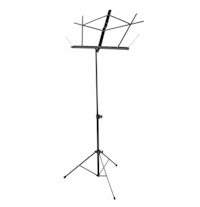
Hal Leonard PMS240 Pro-Lok Sheet Music Stand: Amazon
Hercules BS100B WIRE Music Stand: Amazon
Hisonic 7121 Folding Music Stand with Bag: Amazon
On Stage Folding Music Stand with Bag, Chrome: Amazon
On Stage SM7122B Folding Music Stand, Black: Amazon
St. Louis Music Folding Music Stand: Amazon
Stageline MS2BK Music Stand, Black: Amazon
Stageline MS2BKB Music Stand, Black with Bag: Amazon
Stageline MS2NK Music Stand, Nickel: Amazon
Stagg MUS-A2 BK Collapsible Music Stand: Amazon
Aspiring classical guitarists will need either a simple portable foot rest or a guitar support (below) for proper play. Sometimes called a "foot stool," the purpose of a foot rest is to elevate the left leg so that the head of the guitar is at eye level. Get one that is foldable and adjusts to multiple levels.

Como Adjustable Height Foldable Metal Foot Rest: Amazon
DBPower Guitar Foot Rest : Amazon
Guardian Guitar Foot Stool (Folding, Black): Amazon
Hercules FS100B Large Foot Rest: Amazon
K&M Guitar Footrest, Nickel: Amazon
K&M 14670-000-55 Guitar Footrest, Black: Amazon
Legacy Folding Guitar Foot Rest / Foot Stool, Black: Amazon
Monoprice 603800 Foot Rest: Amazon
Musician's Supply Guitar Foot Rest: Amazon
On Stage FS7850B Guitar Foot Rest: Amazon
Stage Rocker Hamilton SR360300 Guitar Foot Rest, Black: Amazon
Stageline 7590 Guitar Foot Rest: Amazon, Amazon2
Pyle-Pro PGST20 Guitar Foot Stool: Amazon
Stagg FOS-A1 BK Metal Foot Rest, Black: Amazon
Stagg FOS-B1 BK Guitar Foot Stool, Black: Amazon
Standard 2449 Guitar Foot Stool: Amazon
Tour Grade Guitarist Footstool: Amazon

Guitar Foot Stool Package (1) Mahogany & (1) Metal: Amazon
Guitar Footstool (Wooden): Amazon Included as warning: I don't recommend.
Stagg FOS-A1 WD Wooden Folding Foot Rest for Guitar Players: Amazon
Ultra Wood Guitar Foot Stool W/Bag: Amazon
Like the foot rest (above), the purpose of a guitar support is to elevate the head of the guitar to eye level for proper play. Unlike the foot rest, which raises the leg, it rests between the left leg and the guitar itself.

This cushion is available in two sizes; the large cushion raises the guitar approximately 5½ inches and the smaller by 3½ inches. Some guitarists say the large version is too large for some smaller adults and that using it is not the best choice for stage play.
Dynarette Guitar Cushion (Large): AmazonDynarette Guitar Cushion (Small): Amazon Amazon2

This method relies on the strength of the suction-cup to adhese to the side of the guitar. The makers of suction-cup attached supports claim that the cups leave no marks on your instrument. Also listed below is a suction-cup protector that you apply to your guitar before attaching the cups.
A-Frame Guitar Support: AmazonEFEL guitar support, basic: Strings By Mail
EFEL guitar support, advanced: Strings By Mail
ErgoPlay Tappert Classical Guitar Support: Amazon
ErgoPlay Tröster Guitar Support: Amazon
Flanger FA-80 Guitar Support: Amazon, Amazon2
Gitano, Classical Guitar Support: Strings by Mail, Big Mo, XGuitars
NeckUp Guitar Support: Amazon
NeckUp Guitar Support 2" Mini: Amazon
Oasis OH-25 Quadrest™ Guitar Support with carry case: Oasis, Strings By Mail
Tenuto-Lite Guitar Support: Amazon
Tenuto-Pro Guitar Support: Amazon
Oasis Guitar Support Suciton Cup Protector OH-24: Strings By Mail
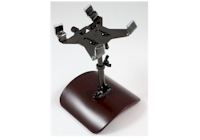
Clamp-type supports do not rely on gravity or suction cups but use clamps to attach to your guitar. Luthiers use clamps to glue together the body of the guitar, so as long as the clamps are covered with a protective plastic, they will do no damage. A better solution for those who practice for longer periods.
Murata GR-2B, Guitar Rest with adjustable feet, Black: Strings By Mail
A "capo" is placed on the neck to change the vibration length of the strings. It is used to raise the pitches of the guitar strings. The capos below are designed for classical guitar necks. I do not prefer the "elastic" ones, so I have not included them. If you own an steel-string guitar, you'll want one that is specifically designed for those guitars.
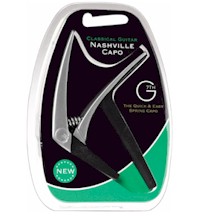
G7th Performance Classical Capo (Silver): Amazon
♪ G7th Nashville Spring-Loaded Classical Guitar Capo: Amazon
♪ G7th Nashville Classical Guitar Capo (Silver): Amazon
Jim Dunlop 88B Trigger Capo Classical, Black: Amazon
Kava Capo for Classical Guitar: Amazon
Kyser KGCB Classical Capo, Black: Amazon
Meideal Mcapo12 Classical Guitar Capo, Black: Amazon
Meideal Capo for Classical Guitar,Silver: Amazon
Planet Waves NS Classical Guitar Capo, Black: Amazon
Rollins ROL-295 Classical Guitar Capo, Black: Amazon
Shubb C2 Classical Guitar Capo, Nickel: Amazon
Shubb C2B Classical Guitar Capo, Brass : Amazon
Shubb S2 Classical Guitar Deluxe Capo: Amazon
On Stage GA300 Classical Guitar Capo, Black: Amazon
In a set of 6 classical guitar strings, the bottom 3 strings strings are wound with either nickel, copper, silver, titanium or even gold; the winding adds mass so that the strings sound lower in pitch.
Nylon strings last for 6 months to a year before starting to lose their quality. Wipe them down with a soft cloth after you play and they will last even longer. I suggest buying an extra pack for when a string breaks unexpectedly. After replacement, nylon takes a long time to "stretch" into place; they will need a week of numerous daily tunings to settle.
Composite strings are made from fluorocarbon polymers; manufacturers claim they offer several benefits when compared with nylon strings: 1) they last twice as long 2) they have a brighter sound 3) they stretch less and stay in tune longer 4) the break in period is shorter 5) they have a smaller diameter and easier to play 6) they are more resistant to climate changes.
String Gauge & Tension: string gauge can contribute to the ease of play. (Gauge is the diameter of the string measure in thousands of an inch.) Given the same amount of tension, thicker strings sound lower in pitch, therefore it takes more tension to bring it up to the pitch of a thinner gauge. Higher tension (heavier gauge) strings sound louder and brighter, but they are harder to play. Lower tension (lighter gauge) strings sound mellower and softer, but they are easier to play. Put heavy gauge (high-tension) strings on a guitar with high action and an experienced guitarist will have serious trouble playing it. For students, choose low tension to normal (standard) tension strings.
For beginners, I recommend:
- normal or medium tension strings for nylon-string guitars.
- light gauge bronze strings with ball ends for steel-string guitars
The light gauge will break more often, but they are easier to learn to play.
Below, you'll find strings for classical guitars.
Augustine Imperial-Red Medium Tension Strings: Amazon
D'Addario EJ27N Student Nylon Strings, Normal Tension: Amazon
D'Addario EJ45 Pro-Arte Nylon Strings, Normal Tension: Amazon
D'Addario EJ45C Pro-Arte Composite Strings, Normal Tension: Amazon
D'Addario EJ45TT Pro-Arte DynaCore Strings, Titanium, Normal Tension: Amazon
D'Addario EJ49 Pro-Arte Black Nylon Strings, Normal Tension: Amazon
D'Addario EJ45LP Pro-Arte Composite Strings, Normal Tension: Amazon
Hannabach 728-MT Medium Tension Nylon, Silver: Amazon
Hannabach 815-LT Low Tension Nylon, Silver, : Amazon
Hannabach 815MT, Medium Tension Nylon, Silver: Amazon
Hannabach 815-SLT Super Low Tension Nylon, Silver: Amazon
Hannabach 825-MT Medium Tension Nylon, Pure Gold: Amazon
Savarez 540R Alliance Strings, Standard Tension, Red Card: Amazon
Savarez 500PR Corum Cristal Strings, Standard Tension, Blue Card: Amazon
Savarez Strings 500AR Nylon Strings, Medium: Amazon
Sevilla Tie End, Sivered Copper, Medium Tension: Amazon
Sevilla Ball End, Sivered Copper, Medium Tension: Amazon
A half turn of a guitar's tuning peg is designed to move the string roller just a fraction of a millimeter at a time─this enables extremely accurate tuning, but it is a huge hindrance when replacing strings. When faced with the task of changing all six strings (which involves, scores or perhaps, hundreds of peg turns; got carpel tunnel?) you'll happily pay double for a peg winder. Some models combine the winder with a string cutter. Most come with a notch to pry up the bridge pin of some ball-end string types. For big jobs, there are drill bits to attach to a variable speed drill. Two products I do not recommend: 1) guitar tool kits, which come with a bunch of stuff for electric guitars. 2) single-function peg winding drills.
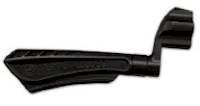

If, at purchase, your guitar didn't come with a bag or case, you'll need something to protect your instrument when you carry it to and from your lessons. The simplest solution is a gig bag. The sizes are a bit more broad than guitar sizes. Buy the correct size or just a touch bigger, for your guitar. Below are mostly classical guitar bags.



If a bag is not durable enough, consider a case. There are two types of cases: hard-shell and soft-shell. Often, manufacturers make hard-shell cases to fit their specific guitar or series. Hard-shells have a lined interior to provide a soft protective cocoon around the guitar. Some hard-shell case manufacturers claim their cases maintain a well-humidified environment to protect the guitar from dryness and cracking. Buy the right size for your instrument. Classical cases are listed below:
Gearlux Hardshell Classical Guitar Case: Amazon
Crossrock Fiberglass Case: Black, Grey, Navy, Pink, Purple, Red, Silver, White
Crossrock 700 Series Wood Case, Black Vinyl: CRW700C CRW700CB
Humicase Protege Classical/Flamenco Guitar Case Black: Amazon
HumiCase Protege Thinbody Acoustic Guitar Case: Amazon
MBT Classical Guitar Case - Wood: Amazon
MBT Classical Guitar Case - Lightweight ABS Molded: Amazon
Seagull 006762 V1054 Flat Top Case: Amazon
Takamine GC1118G Classical Guitar Case: Amazon
TKL Model 7800 Premier Classical Full Size Guitar Case: Amazon
Yamaha HC-CG Full Size Classical Vinyl Guitar Case: Amazon
Guardian CG-020-C Case: Amazon
You can always tell a classical guitarist when you meet one: right hand has long well manicured nails, left hand has nails trimmed down to near the quick. Find nail care books here. Find recommended nail care products below:
Unfortunately, emery boards and metal files rip the layers of nail apart and leave the edges ragged. General shaping of right hand fingernails should be done with a diamond dust nail file.

Finishing of properly shaped nails are done with fine 600+ grit silicon carbide paper; the finer (more grits) the better. They are sold in large quantities that will probably last you for years.
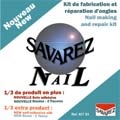
Here's another link to a nail repair site for guitarists: guitarplayernails.com
Guitars are supposed to be kept in environments with a 45%-50% relative humidity level. The dry desert environment of Las Vegas, normally below 25% relative humidity, may cause the wood of your guitar to dry out, warp or crack. You can keep your guitar hydrated to the proper humidity level with a guitar humidifier; more expensive versions come with a hygrometer (humidity monitor) or you can buy them separately.
Some humidifiers hang from the strings of your guitar and others clip or lay inside your case. If you have a Gig Bag, these latter types may pose a challenge.
Arion In-Case Humidifier: Amazon
Dampit 9127 Guitar Humidifier: Amazon
Dampit 9128 Guitar Humidifier Super: Amazon
Humistat Instrument Humidifier: Amazon
Kyser KLHA Guitar Humidifier: Amazon, Amazon2, Amazon3
Martin Guitar Humidifier: Amazon
Oasis OH-6 Case Humidifier: Amazon
Oasis OH-5 Plus+ Humidifier: Amazon
Oasis OH-1 Guitar Humidifier : Amazon, Amazon2
Oasis OH-14 Case Plus+ Humidifier: Amazon
Oasis OH-18 Ukulele Humidifier: Amazon
Planet Waves Acoustic Guitar Humidifier: Amazon
Planet Waves Humidipak Automatic Humidity Control System: Amazon
Planet Waves Small Instrument (Ukelele) Humidifier: Amazon
The Humitar Guitar Humidifier: Amazon
I hope these recommendations are helpful.
I appreciate your input. Let me know what you think.
Also, if you find any broken links, let me know. Thanks for your help.
